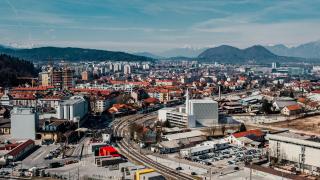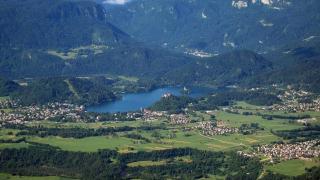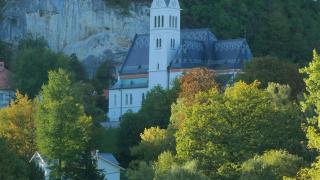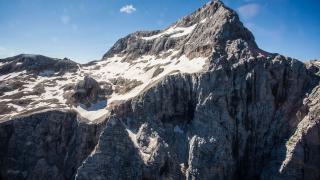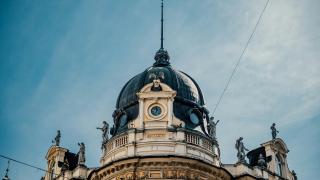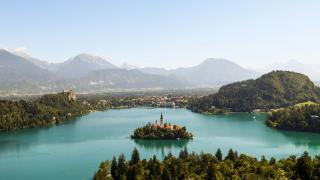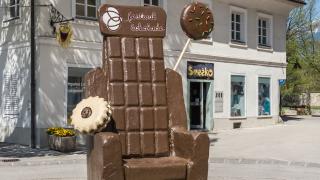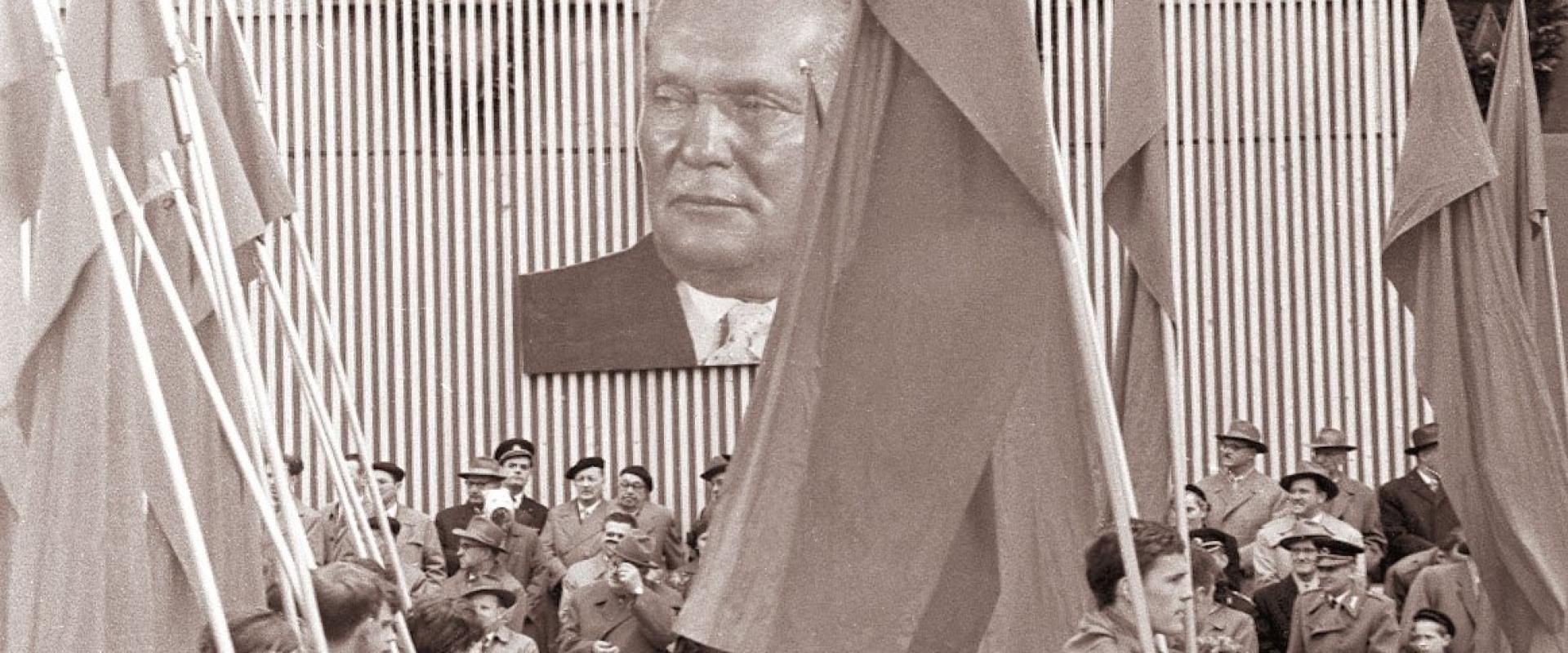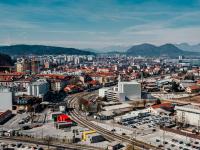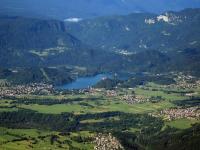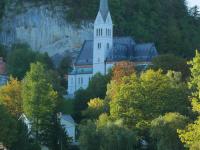Flavors of the Land
Slovenian cuisine in Slovenia reflects the country’s varied geography. Alpine, Mediterranean, and Pannonian regions shape local dishes. Meals often feature ingredients grown or raised within 50 kilometers. Markets in Ljubljana sell fresh produce daily, with prices for local cheese starting at €2 per 100g.
Influences from Italy, Austria, Hungary, and Croatia are visible. You will find štruklji (rolled dumplings), jota (sauerkraut stew), and bograč (meat stew) in different regions. Kranjska klobasa, a protected sausage, costs around €4 at local shops. Idrijski žlikrofi, a dumpling from Idrija, is served in restaurants for about €8 per portion.
Seasonal eating is common. Wild mushrooms appear in autumn, asparagus in spring. Many families still forage or grow their own food.
Food plays a central role in Slovenian gatherings. Sunday lunches last two hours or more. Bread is often homemade, especially in rural areas.
Street food markets in Ljubljana operate from March to October. Portions of Prekmurska gibanica cake cost €3-€4. Local wine and schnapps are widely served.
Must-Try Slovenian Dishes
Kranjska klobasa is a protected sausage from Gorenjska. Served hot, it costs around €4–€6 in local markets. Idrijski žlikrofi are potato-filled dumplings from Idrija. They are often served with meat sauce. Expect to pay €7–€10 per portion in Idrija restaurants. Prekmurska gibanica is a layered cake from Prekmurje. It contains poppy seeds, apples, walnuts, and cottage cheese. Slices cost €3–€4 in local bakeries.
Other local favorites include:
- Jota: A hearty stew with sauerkraut, beans, and potatoes. Common in Primorska and Karst regions. Served in mountain huts for €5–€8.
- Štruklji: Rolled dumplings with sweet or savory fillings. Found across Slovenia, often as a side dish. Portions cost €4–€6.
- Potica: Rolled cake with walnut or tarragon filling. Eaten during holidays. Sold in bakeries for €12–€18 per loaf.
- Bograč: A spicy meat stew from Prekmurje. Similar to Hungarian goulash. Served at festivals and local inns for €6–€9.
Drinks:
- Slovenian wines: Try Rebula in Goriška Brda or Teran in Karst. Glasses cost €2–€4.
- Schnapps (žganje): Offered in rural guesthouses. Often homemade. A shot costs €1–€2.
- Craft beers: Ljubljana and Maribor have local breweries. Pints cost €3–€5.
Where to Eat Like a Local
Slovenia’s gostilna are family-run inns serving traditional dishes. Look for places with handwritten menus and local wine. Prices for a main dish range from €8–€15. Restavracija offer modern takes on classics, often in city centers. Expect mains from €15–€25. In Ljubljana, the Central Market operates daily except Sundays. Here, try fresh burek or štruklji for €2–€4. Street food stalls sell Kranjska klobasa and seasonal pastries. Friday’s Odprta Kuhna (Open Kitchen) runs March–October, 10:00–21:00. Local chefs prepare regional specialties outdoors. In rural Slovenia, mountain huts (planinske koče) serve jota stew, žganci, and homemade cheese. These huts are open spring to autumn. Prices are €5–€10 per dish. For authentic experiences, avoid menus with photos or multiple languages. Ask for dnevna ponudba (daily offer) to get what locals eat. Many village inns do not accept cards—bring cash. Reservations are needed on weekends, especially in smaller towns. Most kitchens close by 21:00. Local specialties change by region—Prekmurje for gibanica, Primorska for seafood. Always check for seasonal dishes and house-made desserts.
Dining Customs & Etiquette
Slovenian meals follow a set structure. Lunch is the main meal, usually eaten between 12:00 and 15:00. Dinner is lighter and served after 18:00. Breakfast is simple, often bread with cheese or cold cuts. In restaurants, wait to be seated. Menus list dishes in Slovenian; English translations are common in tourist areas. To order, say "Prosim" (please) and point if needed. Tap water is safe and free if requested. Bread is often served automatically and may be charged (€1–€2). Tipping is not obligatory but rounding up or leaving 5–10% is appreciated. Payment is usually at the table; ask for "račun, prosim" (the bill, please). Credit cards are widely accepted, but some gostilna prefer cash. It is polite to greet staff with "Dober dan" (good day). Locals toast with "Na zdravje!" before drinking.
Practical Foodie Tips
Menus in Slovenia often list allergens. Look for "brez glutena" (gluten-free), "vegetarijansko" (vegetarian), and "vegansko" (vegan). Ask for "alergeni" if you have allergies. Useful phrases: "Ali vsebuje oreščke?" (Does it contain nuts?), "Sem vegetarijanec/vegetarijanka" (I am vegetarian). Ljubljana Central Market is open daily except Sundays. Local cheese, honey, and seasonal produce are sold by weight. Prices: apples €1.50/kg, cheese €10–€15/kg. Street food like burek or klobasa is common in city centers. Expect to pay €2–€4 per item. Tap water is safe to drink across Slovenia. Bring a refillable bottle. Portion sizes are moderate. One main dish is usually enough. At food festivals, such as Odprta Kuhna (Fridays, March–October, Ljubljana), sample small portions for €3–€6 each. Supermarkets like Mercator and Spar carry labeled products for special diets. For budget meals, try "malica" (lunch specials) from €5–€8, served 10:00–14:00. Always check ingredients in traditional dishes, as many use dairy or eggs.
